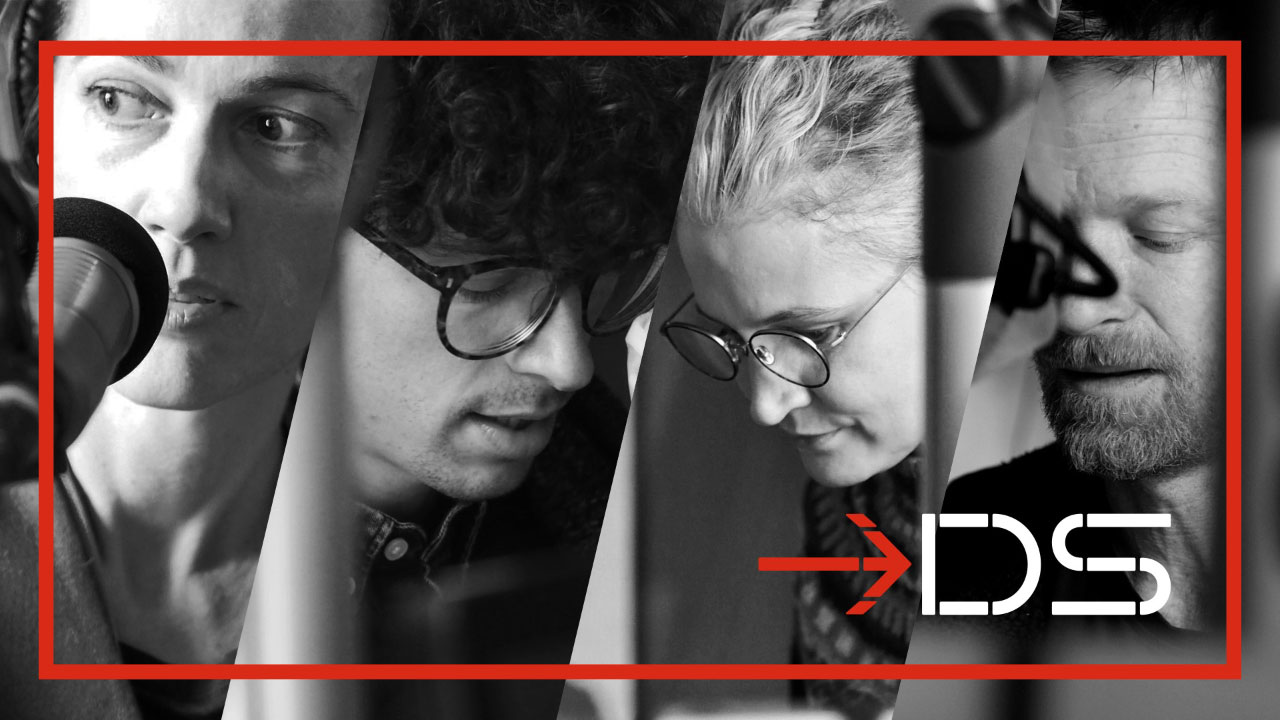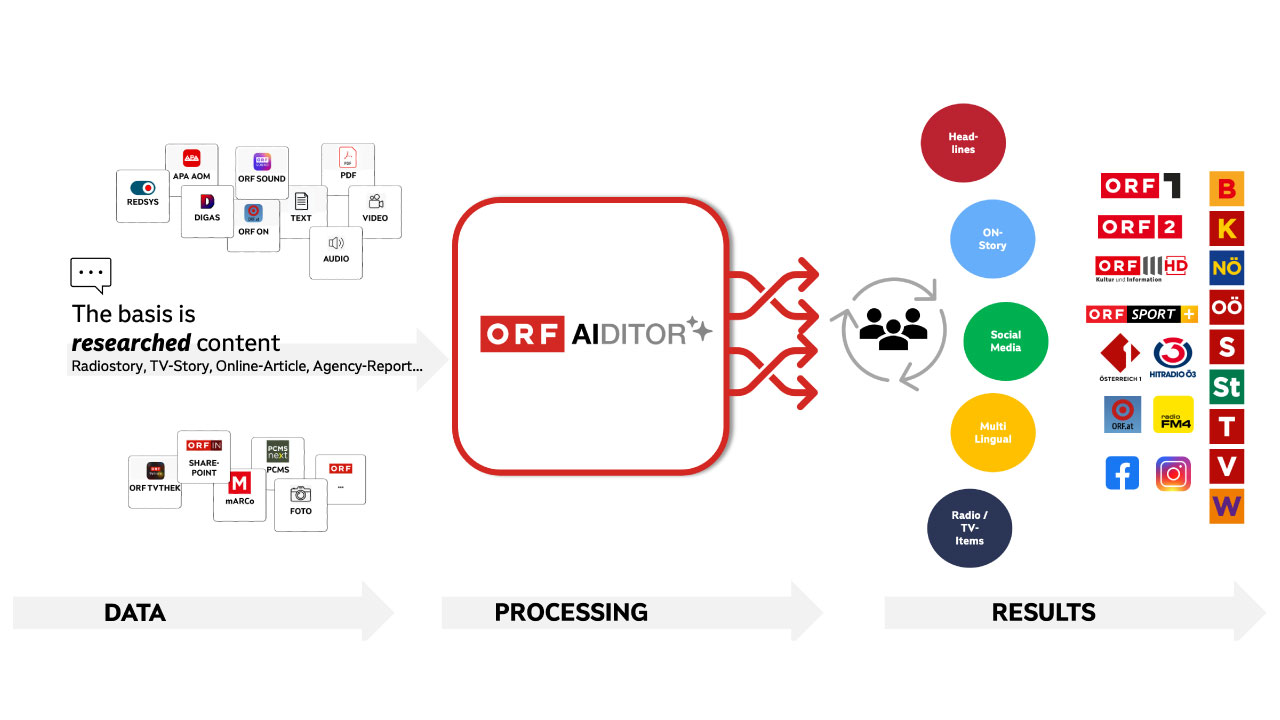
Deepfakes for good
Fraukje Heida (EO, Netherlands)
Deepfakes don’t have the best reputation. Associations such as deepfake pornography videos, identity fraud, and political deception are commonly linked to digitally manipulated videos that appear incredibly realistic. But can deepfakes also be used to protect people? Can you use face swaps to make individuals unrecognizable on screen so they’re still willing to share their stories in sensitive news items? And how can you do this in in an uncontrolled setting, for instance outdoors? EO, a Dutch broadcaster, set out to answer these questions in collaboration with NPO Innovation.
The way anonymity is currently often achieved has significant drawbacks. Showing a silhouette or blurring a face or voice negatively impacts viewers’ perceptions. People feel that the guest in question has something to hide. Furthermore, blurring is labour-intensive during recording and post-production, and it takes away a significant portion of the guest’s ability to express themselves. Viewers may find it harder to identify with the guest and show less empathy as a result. Can deepfakes provide solutions to these issues?
We have proven that it is possible to anonymize people in uncontrolled settings using deepfake technology without sacrificing their personality. But what considerations come into
play when making such a choice, especially when trustworthiness is paramount?
Of course, there are practical considerations: using a target face that has similarities to the original face results in a more subtle deepfake, while using a completely different target face ensures better anonymization. Additionally, obstacles like dangling earrings, hands in front of the face, and flashes of light need to be avoided because they require a lot of manual adjustments and therefore increase the costs. Alongside technical findings, we also discovered that participants are hesitant to trust anonymization using deepfake as they have not yet seen proof that it works.
This is also the reason television crews are hesitant to use it, as the deepfake process can only be started after the final edits and is therefore deemed too risky. For this reason, new formats and other contexts that call for a gimmick are better opportunities to experiment with deepfakes than situations that might be a matter of life or death. We have compiled all these considerations in a manual and video.
Deepfakes make vulnerable individuals unrecognizably real, and their stories have never been told so compellingly. The question is whether the reputation of deepfakes can be changed for the better.
Thoughtful collaboration between AI and humans for storytelling
Anna Vošalíková (Czech Radio)
Digitální spisovatel – or Digital Writer – was initiated by Czech Radio in 2020. The project utilizes OpenAI’s GPT, versions 2 through 4, to create a series of short stories for a radio audience. The first interaction with GPT was conducted via a far more rudimentary access point than the one we are accustomed to today with ChatGPT.
The first season of Digital Writer included five short genre- based stories generated using a number of prompts and settings. Stories in different genres were generated – romance, sci-fi, horror, true crime and historical drama – all performed by some of the leading actors and voice actors of the day.

The Digital Writer stories are brought to life by some of Czechia’s leading actors
The second season featured eight stories based on collaborative interaction between GPT-3 and human writers, who used AI to mimic their own creative processes. Some writers chose to take turns with the algorithm in writing their stories. Some had entire plotlines or characters generated by AI. Others even let AI finish the stories they themselves had started. The results were a vast improvement on the experimental nature and simplicity of the stories presented in the first season.
The second season of Digital Writer also included interviews with the authors, who spoke about their personal experience with the process. It would be fair to say that not all of them enjoyed the collaboration, while others did find it enriching and, if not that, at least fun.
The most recent season of Digital Writer was launched at the beginning of 2023. The third season brought short stories once again entirely written by AI. The audience also had a
chance to engage with artificially generated radio reports performed by our most famous radio reporter.
We also created a fully fictional ‘true’ crime podcast that lends an odd perspective on the whole genre and the ethics of this brand of podcasting. This season allowed us to take a closer look at our own radio work and helped us figure out the true strengths of creative AI use: a consistent and thoughtful collaboration with humans.
AI supporting multimedia workflows
Stefan Kollinger (ORF, Austria)
At the intersection of innovative technology and creative content, ORF, the Austrian Broadcasting Corporation, started an ambitious endeavour to not only deal with AI but to actively shape it. This vision is embodied in our strategic and literacy initiative AI DAY.
AI DAYs at ORF are more than just events; they are a space for the future, bringing together colleagues from various departments, internal and external experts, and visionaries. Employees are given a platform to exchange ideas about the possibilities and challenges of AI in media. Moreover, the events have succeeded in attracting multiple companies to inspire with their keynotes on generative AI, synthetic data, and various applications in administrative areas, content production, and distribution.
The beating heart of these initiatives is the ORF AI LAB – a creative and technological incubator serving as the hub of AI activities. Under the slogan “Join Forces” this lab initiates innovative projects that demonstrate how AI could transform the world of media.
A tangible product of this culture of innovation is the AiDitor, an in-house development by ORF, acting as a stand-alone web application. This tool aggregates various major AI services and offers users a ‘playground’ to experience the possibilities of AI first-hand. Client-capable and structured in customizable workspaces, the AiDitor allows for tailored usage, whether
for internal organizations, departments, or teams.

Based on use cases from everyday work life, the AiDitor can generate texts, create images, generate audio, design social media posts, translate and transcribe texts, as well as provide a chat function. It aims to simplify work, secure ORF’s technological leadership in the exciting field of AI and support the further establishment of multimedia workflows and products.
AI DAYs at ORF are more than an event – they represent a commitment to the future, where technology meets content.
This article first appeared in issue 58 of EBU tech-i magazine.
